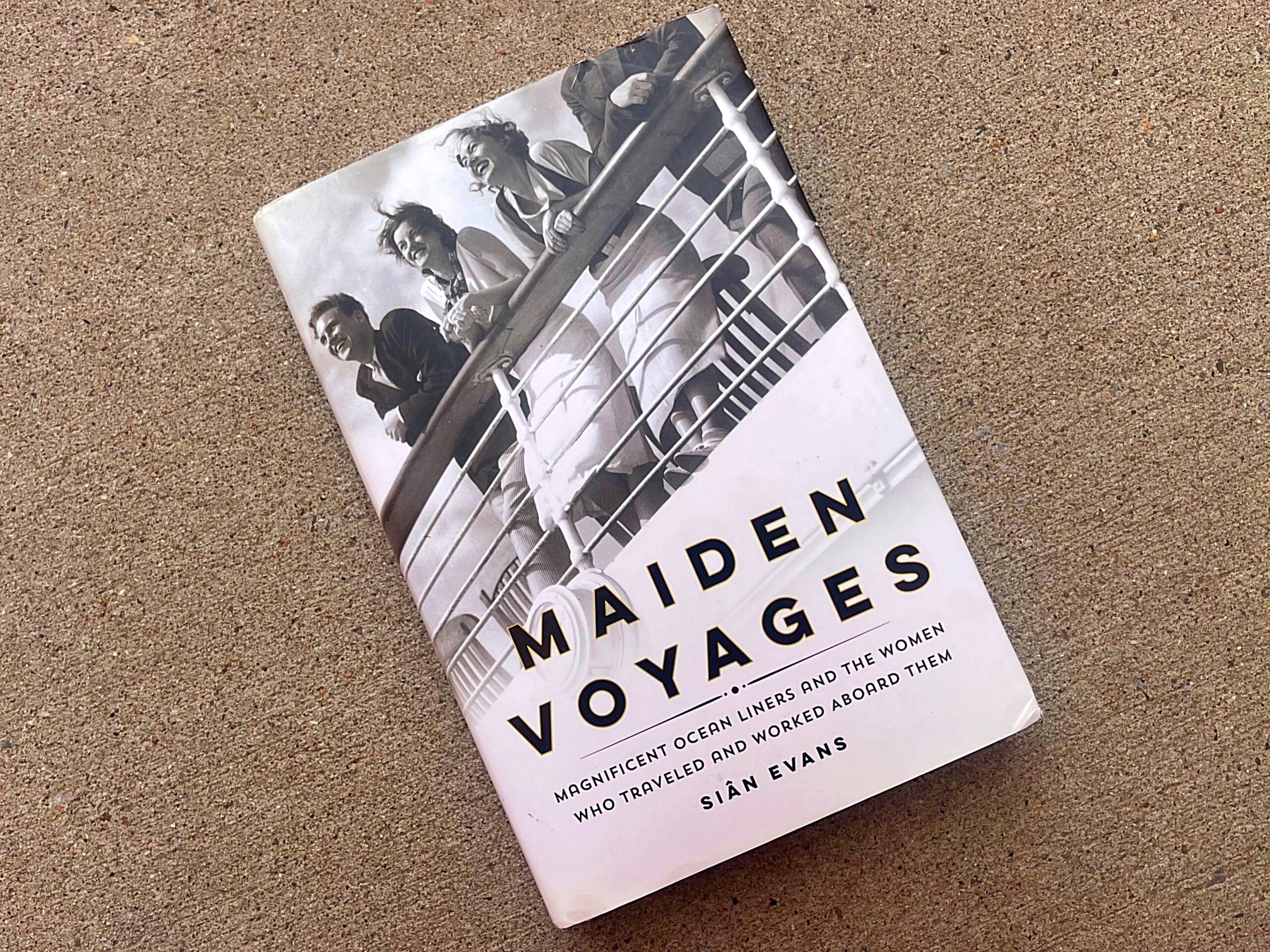This post contains affiliate links. If you click one, I may earn a commission at no cost to you. As an Amazon Associate, I earn from qualifying purchases.
Great transatlantic liners like Mauretania, Lusitania, Aquitania, Olympic, Île de France, Imperator, Rex, Normandie, Queen Mary, and Queen Elizabeth dominated the first half of the 20th century. In the days before commercial jet travel, anyone wanting to travel across the Atlantic to Europe or America had to do so aboard an ocean liner. These ships often carried hundreds — sometimes thousands — of people at one time on a single voyage. Increasingly, women made up bigger portions of the liners’ passengers and crew as the century went on.
Book Summary
Although there are many books on the impact of transatlantic ocean travel, women’s stories are often left out. At last, Maiden Voyages seeks to change that and expand the narrative. As author Siân Evans notes:
Millions of women’s lives were transformed by their journeys between the Old and New Worlds in the first half of the twentieth century. From the beginning of the First World War to end of the Second, women of all cultures and backgrounds went to sea for an infinite variety of reasons.
Maiden Voyages tells the largely untold stories of some of these women. Shipboard workers like Edith Sowerbutts, Hilda James, Nin Kilburn, and Maida Nixson made their way in a male-dominated industry. Passengers like Josephine Baker, Hedy Lamarr, and Tallulah Bankhead reinvented themselves overseas. Others, like Marie Rifflemacher and Mary Anne MacLeod, sailed to America to escape poverty and find new opportunities for themselves.

To all of these women and millions more, the old ocean liners represented hope and promise. Because, as the author mentions:
Those pioneering and intrepid women who sailed the Atlantic during the golden age of travel, whether as passengers or seafarers, had their lives transformed by their experiences, mostly for the better. Their motivations were as diverse as their personalities, but for each of them, to embark upon a sea voyage at all was to take a step into the unknown.
Maiden Voyages offers a fascinating, in-depth look at how women — and society at large — were affected by transatlantic ocean travel.
My Thoughts
I really liked Maiden Voyages! Siân Evans, whose great-great uncle was a Cunard deck officer, writes in a highly engaging and entertaining style. Her prose brings the stories to life in a clear, vivid way. She definitely did her research and it shows. Yet all of that attention to detail doesn’t feel burdensome like it does in some non-fiction books (I’m a history major…trust me on this). Overall, I found this book a very enjoyable read.
I found myself more drawn to the stories of women working aboard the various ships as stewardesses, conductresses, hairdressers, and more. But I’ve always been keenly interested in what it was like to work aboard the old liners…even back when I worked at the Queen Mary. That said, I also found the stories of First, Second, and Third Class women also engaging and informative.

However, there was just one thing in the book that irked me somewhat. First (in what was undoubtedly an editing error), the author noted twice that the RMS Majestic was the sister ship to the ill-fated Titanic and Britannic. Pretty sure my eye twitched at that.
Conclusion
All said, I highly recommend Maiden Voyages! It’s a comprehensive and engaging look at a largely untold chapter of ocean liner history. Indeed, social history too.

Leave a Reply